Alan M. Clark’s Jack the Ripper Victims Series is comprised of five novels, one for each of the canonical victims of the murderer. These stories are not only meant to appeal to those interested in the horror that was the Autumn of Terror, but also those interested in the struggles of women in the 19th century. They are well-researched, fictional dramatic stories meant to help readers walk in the shoes of the victims and give a sense of the world as each of the women may have experienced it. The timelines for the stories run mostly concurrently, so it doesn’t matter in what order the books in the series are read. They are simultaneously drama, mystery, thriller, historical fiction, and horror. They are novels concerning horror that happened.
Warning:
There are mortuary photos of Jack the Ripper's actual victims below. The author used them to render portraits of the victims.
The last one might be disturbing to some. So scroll quickly to get to the book descriptions.
Mary Ann “Polly” Nichols
by Alan M. Clark
December 7, 2019
Genre: Crime Horror
Publisher: IFD Publishing
We all know about Jack the Ripper, the serial murderer who terrorized Whitechapel and confounded police in 1888, but how much do we really know about his victims?
Pursued by one demon into the clutches of another, the ordinary life of Mary Ann "Polly" Nichols is made extraordinary by horrible, inhuman circumstance. Jack the Ripper's first victim comes to life in this sensitive and intimate fictionalized portrait, from humble beginnings, to building a family with an abusive husband, her escape into poverty and the workhouse, alcoholism, and finally abandoned on the streets of London where the Whitechapel Murderer found her.
With A Brutal Chill in August, Alan M. Clark gives readers an uncompromising and terrifying look at the nearly forgotten human story behind one of the most sensational crimes in history. This is horror that happened.
December 7, 2019
Genre: Crime Horror
Publisher: IFD Publishing
We all know about Jack the Ripper, the serial murderer who terrorized Whitechapel and confounded police in 1888, but how much do we really know about his victims?
Pursued by one demon into the clutches of another, the ordinary life of Mary Ann "Polly" Nichols is made extraordinary by horrible, inhuman circumstance. Jack the Ripper's first victim comes to life in this sensitive and intimate fictionalized portrait, from humble beginnings, to building a family with an abusive husband, her escape into poverty and the workhouse, alcoholism, and finally abandoned on the streets of London where the Whitechapel Murderer found her.
With A Brutal Chill in August, Alan M. Clark gives readers an uncompromising and terrifying look at the nearly forgotten human story behind one of the most sensational crimes in history. This is horror that happened.
Music Video
The song sung by the ghost that haunts Mary Ann “Polly” Nichols
Excerpts from A Brutal Chill in August
Author’s Note
A Chill in London
This is a work of fiction inspired by the life of Mary Ann “Polly” Nichols, a woman believed to be the first victim of Jack the Ripper. For purposes of storytelling, I have not adhered strictly to her history and I have changed the names of the principal characters subtly. I have assigned to my main character emotional characteristics and reactions that seem consistent with her life and circumstances. This novel is not primarily about Jack the Ripper, but is instead about Mrs. Nichols’s survival within the increasingly difficult and dangerous social and economic environment of London, England between the years of her birth, 1845, and that of her death, 1888.
The summer of 1888 had been a chilly one. In suburbs of London, snowfall had been reported in the small hours of the morning on July 11. Since the cataclysmic eruption of the Indonesian volcano, Krakatoa, which had thrown fine ash high into the atmosphere five years earlier, the climate in the northern hemisphere had been significantly cooler.
In London, a cold-blooded killer would soon begin the work for which he’d be known. What we don’t know is how selective Jack the Ripper was in choosing his victims, whether he acted spontaneously or was attracted to prey with certain traits. The five canonical victims were women. They were impoverished. Each of them had engaged in prostitution. Most were in their forties. Perhaps all were alcoholics. All of these traits were to be found in his first victim, Mary Ann “Polly” Nichols.
On the night of her death, August 30/31, a Thursday night and a Friday morning, the temperature in London hovered around 50 degrees Fahrenheit. The social chill in the city that followed would be much worse, as the police were powerless to stop the killer and the murders continued into the autumn with at least four more victims.
To understand the extraordinary furor in London over the Ripper killings, one must know something about the frequency and variety of death that already occurred within the Whitechapel area of the time. The murder rate was quite low. Disease took most lives at a younger age than today. The rate of industry-related deaths (violent accidents or chemically induced) was quite high, as was the suicide rate and the infant mortality rate (at least 30%, but probably closer to 50% died before the age of 5). The average human being had an expected life span of around forty years. Many prostitutes were brutalized and much violent crime occurred during the years between 1887 to 1889, yet few who died were seen to be murders. Perhaps this is attributable to the desire of authorities to keep quiet about the crime rate during a time of swift economic change and social upheaval. Whatever the case, the violence characteristic of the Ripper killings, with multiple stabbings and apparent sexual degradation of the victims suggesting piquerism on the part of the killer, certainly surprised the citizens of London.
The city’s East End was filled with the poor, many of them immigrants. Most suffered under a class system that maintained a sharp division between the haves and have-nots. Due to the resentment this naturally caused, the idea that the killer might be a gentleman slumming in Whitechapel and killing for pleasure was not unbelievable to many in the lower class. Within the upper classes, many believed the lower classes were spoiling for a rebellion, and saw the murders as just another indication of the moral corruption of the denizens of the East End.
Fear on the streets resulting from the Ripper murders became so powerful that groups among all classes began to fight against it. Although many weren’t in agreement over the causes of or solution to the outrage, the conversation or argument that followed helped bring attention to the sad conditions in which people lived within the city’s East End. Their anger became a hot response to the chill in London in the summer of 1888, one that ignited a fire that slowly brought change to the city.
As we continually face questions about the worth of those with little versus those with much, the banked coals of that fire ignited in London in 1888 still smolder.
Likely, Mrs. Nichols would have been surprised to learn of the history that flowed from the moment of her death. Like many throughout history, she had a simple life, but not one without controversies and drama. As with all of our stories, simple or complex, rich or poor, it’s the emotional content and context that counts.
—Alan M. Clark
Eugene, Oregon
Chapter 21
A Need for Worry
Polly took books, paper, and pencils to the Dews family lodging to help her teach Estell to read and write. Clearly impatient as he waited through the first lesson, Tom paced quietly. Even so, he didn’t show an ill-temper.
“Thank you, Polly,” Estell said.
Tom smiled. “My little sister, turned bookish. Look at your happy lamps.”
Bashful, Estell punched him lightly in the chest.
While the girls got ready to go out, Polly spoke to Tom quietly so the others couldn’t hear her. “Bill has caught me out three times now. He has forbidden me to drink. I cannot go to pubs any longer.”
“He doesn’t know how to find you here,” Tom said. “You’ll have your drink here.”
For fear that he might take his fine hammer to her husband, Polly didn’t tell Tom about Bill’s threats of violence.
Before leaving for market with Nancy, Estell placed her hand on Polly’s pregnant belly. “Your child has got big. Don’t let Tom poke a hole in her.”
Tom swatted at Estell, but she dodged out of the way. “You shall not talk like that!”
“Why not?” Estell said.
Polly liked the girl’s pluck. She smiled, realizing that Estell had referred to her infant as female. She probably looked forward to having another little girl around.
“Young ladies ought not speak of such things,” Tom said, eyes wide with outrage.
Polly made a calming gesture toward him, while Estell stood with her hands on her hips.
“Oh, that’s a rule, is it?” the girl said. “Well, if you needn’t follow the rules, why should I?” She saw Polly smiling and grinned. “I know what you two are about. I like Polly, and want her baby to be safe.”
Tom covered his face with a hand, groaned, and turned away.
“I shouldn’t worry,” Polly said. “We won’t hurt her.”
“Somebody has to worry,” Estell said, too reasonably. She took Nancy by the hand, grabbed her basket and sack, and left the room.
Yes, the child on the way was a matter Polly hadn’t fully sorted. If Bill found out about her adultery and divorced her, he might require her to turn her unborn over to him after the birth. She wouldn’t want the child to grow up without a mother, and yet, she thought resentfully, the infant would prolong the years she must remain with Bill. Perhaps she would be better off if he took the child and divorced her. She had considered making certain Bill discovered her adultery. The potential consequences for her choices and actions seemed to grow increasingly complicated and difficult to consider.
How could the happiest time in her life also be the most distressing?
Knowing the infant had no responsibility for her feelings, she said a prayer for her baby, followed by the penitent prayer.
For the well-being of her unborn, she must keep Tom a secret, but that didn’t mean she’d give him up.
Author’s Note
A Chill in London
This is a work of fiction inspired by the life of Mary Ann “Polly” Nichols, a woman believed to be the first victim of Jack the Ripper. For purposes of storytelling, I have not adhered strictly to her history and I have changed the names of the principal characters subtly. I have assigned to my main character emotional characteristics and reactions that seem consistent with her life and circumstances. This novel is not primarily about Jack the Ripper, but is instead about Mrs. Nichols’s survival within the increasingly difficult and dangerous social and economic environment of London, England between the years of her birth, 1845, and that of her death, 1888.
The summer of 1888 had been a chilly one. In suburbs of London, snowfall had been reported in the small hours of the morning on July 11. Since the cataclysmic eruption of the Indonesian volcano, Krakatoa, which had thrown fine ash high into the atmosphere five years earlier, the climate in the northern hemisphere had been significantly cooler.
In London, a cold-blooded killer would soon begin the work for which he’d be known. What we don’t know is how selective Jack the Ripper was in choosing his victims, whether he acted spontaneously or was attracted to prey with certain traits. The five canonical victims were women. They were impoverished. Each of them had engaged in prostitution. Most were in their forties. Perhaps all were alcoholics. All of these traits were to be found in his first victim, Mary Ann “Polly” Nichols.
On the night of her death, August 30/31, a Thursday night and a Friday morning, the temperature in London hovered around 50 degrees Fahrenheit. The social chill in the city that followed would be much worse, as the police were powerless to stop the killer and the murders continued into the autumn with at least four more victims.
To understand the extraordinary furor in London over the Ripper killings, one must know something about the frequency and variety of death that already occurred within the Whitechapel area of the time. The murder rate was quite low. Disease took most lives at a younger age than today. The rate of industry-related deaths (violent accidents or chemically induced) was quite high, as was the suicide rate and the infant mortality rate (at least 30%, but probably closer to 50% died before the age of 5). The average human being had an expected life span of around forty years. Many prostitutes were brutalized and much violent crime occurred during the years between 1887 to 1889, yet few who died were seen to be murders. Perhaps this is attributable to the desire of authorities to keep quiet about the crime rate during a time of swift economic change and social upheaval. Whatever the case, the violence characteristic of the Ripper killings, with multiple stabbings and apparent sexual degradation of the victims suggesting piquerism on the part of the killer, certainly surprised the citizens of London.
The city’s East End was filled with the poor, many of them immigrants. Most suffered under a class system that maintained a sharp division between the haves and have-nots. Due to the resentment this naturally caused, the idea that the killer might be a gentleman slumming in Whitechapel and killing for pleasure was not unbelievable to many in the lower class. Within the upper classes, many believed the lower classes were spoiling for a rebellion, and saw the murders as just another indication of the moral corruption of the denizens of the East End.
Fear on the streets resulting from the Ripper murders became so powerful that groups among all classes began to fight against it. Although many weren’t in agreement over the causes of or solution to the outrage, the conversation or argument that followed helped bring attention to the sad conditions in which people lived within the city’s East End. Their anger became a hot response to the chill in London in the summer of 1888, one that ignited a fire that slowly brought change to the city.
As we continually face questions about the worth of those with little versus those with much, the banked coals of that fire ignited in London in 1888 still smolder.
Likely, Mrs. Nichols would have been surprised to learn of the history that flowed from the moment of her death. Like many throughout history, she had a simple life, but not one without controversies and drama. As with all of our stories, simple or complex, rich or poor, it’s the emotional content and context that counts.
—Alan M. Clark
Eugene, Oregon
Chapter 21
A Need for Worry
Polly took books, paper, and pencils to the Dews family lodging to help her teach Estell to read and write. Clearly impatient as he waited through the first lesson, Tom paced quietly. Even so, he didn’t show an ill-temper.
“Thank you, Polly,” Estell said.
Tom smiled. “My little sister, turned bookish. Look at your happy lamps.”
Bashful, Estell punched him lightly in the chest.
While the girls got ready to go out, Polly spoke to Tom quietly so the others couldn’t hear her. “Bill has caught me out three times now. He has forbidden me to drink. I cannot go to pubs any longer.”
“He doesn’t know how to find you here,” Tom said. “You’ll have your drink here.”
For fear that he might take his fine hammer to her husband, Polly didn’t tell Tom about Bill’s threats of violence.
Before leaving for market with Nancy, Estell placed her hand on Polly’s pregnant belly. “Your child has got big. Don’t let Tom poke a hole in her.”
Tom swatted at Estell, but she dodged out of the way. “You shall not talk like that!”
“Why not?” Estell said.
Polly liked the girl’s pluck. She smiled, realizing that Estell had referred to her infant as female. She probably looked forward to having another little girl around.
“Young ladies ought not speak of such things,” Tom said, eyes wide with outrage.
Polly made a calming gesture toward him, while Estell stood with her hands on her hips.
“Oh, that’s a rule, is it?” the girl said. “Well, if you needn’t follow the rules, why should I?” She saw Polly smiling and grinned. “I know what you two are about. I like Polly, and want her baby to be safe.”
Tom covered his face with a hand, groaned, and turned away.
“I shouldn’t worry,” Polly said. “We won’t hurt her.”
“Somebody has to worry,” Estell said, too reasonably. She took Nancy by the hand, grabbed her basket and sack, and left the room.
Yes, the child on the way was a matter Polly hadn’t fully sorted. If Bill found out about her adultery and divorced her, he might require her to turn her unborn over to him after the birth. She wouldn’t want the child to grow up without a mother, and yet, she thought resentfully, the infant would prolong the years she must remain with Bill. Perhaps she would be better off if he took the child and divorced her. She had considered making certain Bill discovered her adultery. The potential consequences for her choices and actions seemed to grow increasingly complicated and difficult to consider.
How could the happiest time in her life also be the most distressing?
Knowing the infant had no responsibility for her feelings, she said a prayer for her baby, followed by the penitent prayer.
For the well-being of her unborn, she must keep Tom a secret, but that didn’t mean she’d give him up.
by Alan M. Clark June 9, 2017
This novel is part of the Jack the Ripper Victims Series. Each novel in the series is a stand-alone story.
Annie Chapman led a hard, lower class life in filthy 19th century London. Late in life, circumstances and and her choices led her to earn her crust by solicitation. After a bruising brawl with another woman over money and a man, she lost her lodgings and found herself sleeping rough. That dangerous turn of events delivered her into the hands of London's most notorious serial killer, Jack the Ripper.
Contrasting her last week alive with the experiences of her earlier life, the author helps readers understand how she might have made the decisions that put her in the wrong place at the wrong time.
This novel is part of the Jack the Ripper Victims Series. Each novel in the series is a stand-alone story.
Annie Chapman led a hard, lower class life in filthy 19th century London. Late in life, circumstances and and her choices led her to earn her crust by solicitation. After a bruising brawl with another woman over money and a man, she lost her lodgings and found herself sleeping rough. That dangerous turn of events delivered her into the hands of London's most notorious serial killer, Jack the Ripper.
Contrasting her last week alive with the experiences of her earlier life, the author helps readers understand how she might have made the decisions that put her in the wrong place at the wrong time.
Book Trailer
by Alan M. Clark
June 11, 2017
This novel is part of the Jack the Ripper Victims Series. Each novel in the series is a stand-alone story.
An imaginative reconstruction of the life of Elizabeth Stride, the third victim of Jack the Ripper. The beast of poverty and disease had stalked Elizabeth all her life, waiting for the right moment to take her down. To survive, she listened to the two extremes within herself--Bess, the innocent child of hope, and Liza, the cynical, hardbitten opportunist. While Bess paints rosy pictures of what lies ahead and Liza warns of dangers everywhere, the beast, in the guise of a man offering something better, circles ever closer.
Of Thimble and Threat: A Novel of Catherine Eddowes, the Fourth Victim of Jack the Ripper (Jack the Ripper Victims Series) by Alan M. Clark
This novel is part of the Jack the Ripper Victims Series. Each novel in the series is a stand-alone story.
An imaginative reconstruction of the life of Elizabeth Stride, the third victim of Jack the Ripper. The beast of poverty and disease had stalked Elizabeth all her life, waiting for the right moment to take her down. To survive, she listened to the two extremes within herself--Bess, the innocent child of hope, and Liza, the cynical, hardbitten opportunist. While Bess paints rosy pictures of what lies ahead and Liza warns of dangers everywhere, the beast, in the guise of a man offering something better, circles ever closer.
September 28, 2017
In Victorian London, the greatest city of the richest country in the world, the industrial revolution has created a world of decadence and prosperity, but also one of unimaginable squalor and suffering. Filth, decay, danger, sorrow, and death are ever-present in the streets. Catherine Eddowes is found murdered gruesomely in the city's East End. When the police make their report, the only indicators of her life are the possessions carried on her person, likely everything she owned in the world. In Of Thimble and Threat, Alan M. Clark tells the heartbreaking story of Catherine Eddowes, the fourth victim of Jack the Ripper, explaining the origin and acquisition of the items found with her at the time of her death, chronicling her life from childhood to adulthood, motherhood, her descent into alcoholism, and finally her death. Of Thimble and Threat is a story of the intense love between a mother and a child, a story of poverty and loss, fierce independence, and unconquerable will. It is the devastating portrayal of a self-perpetuated descent into Hell, a lucid view into the darkest parts of the human heart.
In Victorian London, the greatest city of the richest country in the world, the industrial revolution has created a world of decadence and prosperity, but also one of unimaginable squalor and suffering. Filth, decay, danger, sorrow, and death are ever-present in the streets. Catherine Eddowes is found murdered gruesomely in the city's East End. When the police make their report, the only indicators of her life are the possessions carried on her person, likely everything she owned in the world. In Of Thimble and Threat, Alan M. Clark tells the heartbreaking story of Catherine Eddowes, the fourth victim of Jack the Ripper, explaining the origin and acquisition of the items found with her at the time of her death, chronicling her life from childhood to adulthood, motherhood, her descent into alcoholism, and finally her death. Of Thimble and Threat is a story of the intense love between a mother and a child, a story of poverty and loss, fierce independence, and unconquerable will. It is the devastating portrayal of a self-perpetuated descent into Hell, a lucid view into the darkest parts of the human heart.
The Prostitute's Price: A Novel of Mary Jane Kelly, the Fifth Victim of Jack the Ripper (Jack the Ripper Victims Series Book 5) by Alan M. Clark
August 30, 2018
A novel that beats back our assumptions about the time of Jack the Ripper. Not the grim story of an unfortunate drunken prostitute killed before her time, but one of a young woman alive with all the emotional complexity of women today. Running from a man wanting her to pay for her crimes against his brother, Mary Jane Kelly must recover a valuable hidden necklace and sell it to gain the funds to leave London and start over elsewhere. Driven by powerful, if at times conflicting emotion, she runs the dystopian labyrinth of the East End, and tries to sneak past the deadly menace that bars her exit.
Although THE PROSTITUTE'S PRICE is a standalone tale, and part of the Jack the Ripper Victims Series, it is also a companion story to the novel, THE ASSASSIN'S COIN, by John Linwood Grant. The gain a broader experience of each novel, read both.
A novel that beats back our assumptions about the time of Jack the Ripper. Not the grim story of an unfortunate drunken prostitute killed before her time, but one of a young woman alive with all the emotional complexity of women today. Running from a man wanting her to pay for her crimes against his brother, Mary Jane Kelly must recover a valuable hidden necklace and sell it to gain the funds to leave London and start over elsewhere. Driven by powerful, if at times conflicting emotion, she runs the dystopian labyrinth of the East End, and tries to sneak past the deadly menace that bars her exit.
Although THE PROSTITUTE'S PRICE is a standalone tale, and part of the Jack the Ripper Victims Series, it is also a companion story to the novel, THE ASSASSIN'S COIN, by John Linwood Grant. The gain a broader experience of each novel, read both.
Book Trailer
Author and illustrator, Alan M. Clark grew up in Tennessee in a house full of bones and old medical books. His awards include the World Fantasy Award and four Chesley Awards. He is the author of seventeen books, including twelve novels, a couple of novellas, four collections of fiction, some of them lavishly illustrated, and a nonfiction full-color book of his artwork. Mr. Clark's company, IFD Publishing, has released 42 titles of various editions, including traditional books, both paperback and hardcover, audiobooks, and ebooks by such authors as F. Paul Wilson, Elizabeth Engstrom, and Jeremy Robert Johnson. Alan M. Clark and his wife, Melody, live in Oregon.






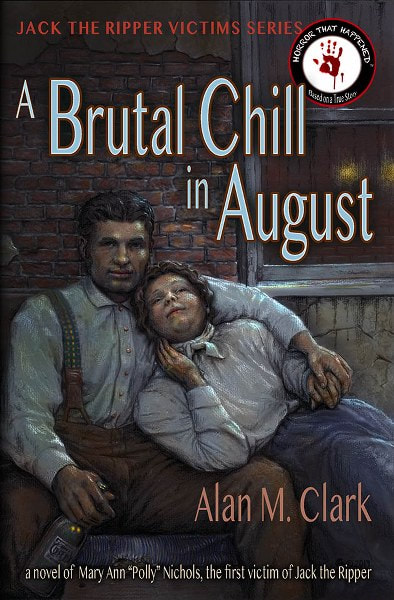
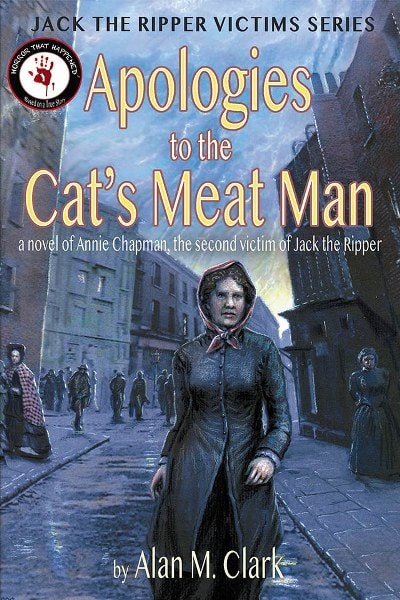
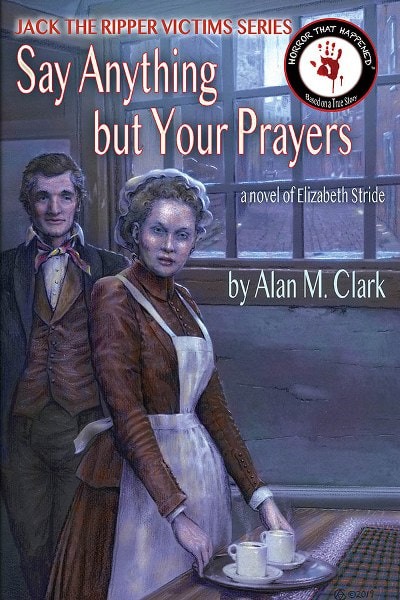
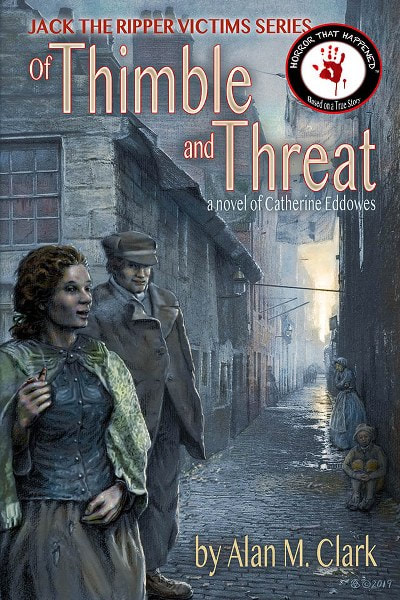
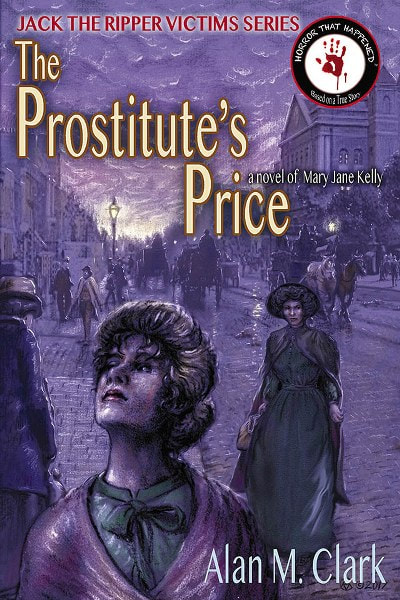


The covers really invite you into the story.
ReplyDeleteI would like to read them all.
ReplyDeleteI liked the retouched mortuary photos, it brings the victims "to life" for me.
ReplyDeleteAs the author and illustrator of the Jack the Ripper Victims Series, I thank you for participating in the blog tour. I am happy to answer questions. You can find me on Facebook: https://www.facebook.com/AlarmClank
ReplyDeleteI really like the covers. They really speak to the story inside. I would love to read these books.
ReplyDeleteWow, this sounds like a great series of books. I love the covers. I really like how you reconstructed the real victims' faces.
ReplyDeleteSounds good.
ReplyDeleteThanks for the praise of the covers and portraits.
ReplyDeleteI love the way the covers were done. I would enjoy reading these books.
ReplyDelete